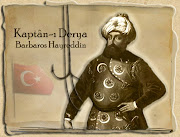 Map of Algiers´ medina before 1830
Map of Algiers´ medina before 1830The Berber medina mistakenly called Casbah, has been fortified by the Barbarossa brothers to resist English, Spanish and French attempts to invade Algiers. The fortification works which ended in 1542 encircled the ancient city over 70 acres, with a wall of 11 to 13 meters in height. Made of mud bricks, this wall was collected with lime mortar comprising oily soil red and sand career. The wall lied on a bedrock of tuff. A vestige of this monumental achievement can be still admired in front of the entrance of the Serkadji prison .
The fortified Medina, which is built on a hill, then presented 7 Gates (Bab) : Bab-el-Oued (Creek Gate), Bab-triq-essour (Gate of the path of fortification), Bab-azzoun (Gate of Azzoun), Bab-dzira (Gate of the island), Bab l´bhar (Gate of the Sea), Bab-jdid (New Gate) and Bab al-casbah (Gate of the Kasbah): Sole remainaings of these legendary names are the Gate of the Casbah and abstract benchmarks.
The fortified Medina, which is built on a hill, then presented 7 Gates (Bab) : Bab-el-Oued (Creek Gate), Bab-triq-essour (Gate of the path of fortification), Bab-azzoun (Gate of Azzoun), Bab-dzira (Gate of the island), Bab l´bhar (Gate of the Sea), Bab-jdid (New Gate) and Bab al-casbah (Gate of the Kasbah): Sole remainaings of these legendary names are the Gate of the Casbah and abstract benchmarks.
 The gate of Azzoun in 1832
The gate of Azzoun in 1832Many narrow streets along the medina. Many of these streets are former Roman paths or filled ravines which served as open sewer at the time Berber. Streets names are mainly given after the occupation of adjoining shops: zenqat sebbaghines (street tinctoria), zenqat bechmagdjia (shoemakers), zenqat ferraghia (fondry), zenqat ressassia (plumbers) or zenqat Mqaissia (bracelets manufacturer) are few examples of these names.
Beside these names, others were refering to adjoining activities or spots descriptions ex : Mcid eddalia (School of the venyard ), Fern el-djmal(Windmill of the Camels), Hammam Maleh (Baths of salted water), Sabat el hout (Vault of the fish ), Ain Hamara (Red fountain), Souk djama echema°in (Market "mosque of the Candlemakers"), Kahouet (Café ), Homa (Area), Kouchet el khondok (Oven of the gutter), Akba´t Chaouech (Chaouech´s Hill), Zaouia (Spiritual brotherhood ),Derb l´ksir (Small door entrance of a district ), Bir el medbah (Well of the slaughterhouse), Dar Serkadji (Serkadji´s house), Triq el-casbah (Casbah´s way) ....

The city has benefited very early by the Roman with a water supply delivering drinking water. This network was latter enriched by Andalous populations who built new aqueduct made of pottery . In the 17 century the Turks will improve the sewage system by digging evacuations 1m under the irrigation system.
The earthquakes of 1364 and 1716 distroyed a good part of the berber city built by the Beni-Mezrena tribe. The South districts of the medina which sheltered before 1830 many Mosques, Souks, Fondouks (hotels) and Palaces have been soon after occupation destroyed by the french army to ease troops transportation. Several architectural modifications will then be brought over the years to give the city its first european stamps.







